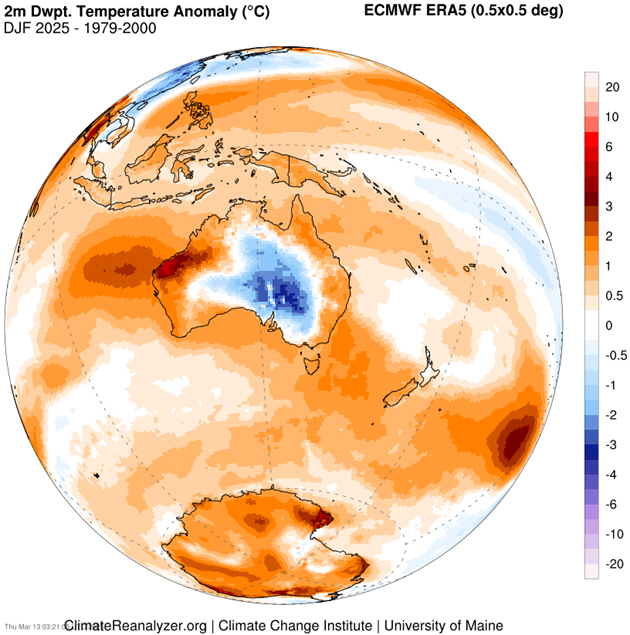Weatherzone - Ben Domensino
Rising ocean temperatures are one of the most obvious impacts of climate change and the last five months have been remarkably warm in the waters around Australia.
The map below shows the sea surface temperature around Australia in January this year.
The red shading shows areas that were warmer than average for January and the darker red off the country’s northwest coast show where sea surface temperatures were more than 3°C above the long-term (1991-2020) average.
 |
| Sea surface temperature in January 2025. Source: Bureau of Meteorology |
The anomaly in summer 2024-25 was +1.01°C, easily beating the previous summer record of +0.89°C from 2023-24.
 |
| Summer sea surface temperature anomalies in the Australian region between 1900 and 2025. Source: Bureau of Meteorology. |
Unsurprisingly, dew point temperatures were above average for most near-coastal regions of Australian in summer 2024-25.
 |
| Dew point temperature anomalies in summer 2024-25. Source: ClimateReanalyzer.org |
So, if you live near the Australian coastline and thought last summer felt muggier than usual, you weren’t imagining it.
Looking ahead, computer models predict that sea surface temperatures will remain higher than average around Australia throughout spring.
 |
| Sea surface temperature outlook for May 2025, according to the ECMWF SEAS5 model |
Despite the cooling influence of a La Niña-like pattern in the Pacific Ocean, global sea surface temperatures have also been running at their second highest level on record in the opening months of 2025.
The only year that had a warmer start than this year based on global sea surface temperatures was 2024.
Links
- Long-range forecasts and climate monitoring Bureau of Meteorology
- Australian climate change monitoring and projections Bureau of Meteorology
- The heat is on: what we know about why ocean temperatures keep smashing records
- In hot water: here’s why ocean temperatures are the hottest on record
- Sea temperature | Reef Authority
- Australia Sea Water Temperatures
- Oceans - CSIRO
- Cyclone Alfred More Intense and Destructive due to Climate Change
- Southern hemisphere monitoring Pacific, Indian and Southern ocean regions

No comments :
Post a Comment